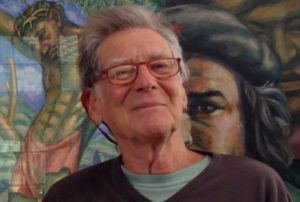
David Kunzle “was the model for being a scholar and an activist,” said Charlene Villaseñor Black, a UCLA art history professor and longtime colleague. (Photo courtesy of Becca Wilson)
Written by Sean Brenner, Director of Strategic Communications, UCLA Division of Humanities, and originally posted here.
David Kunzle, a UCLA professor emeritus who was widely recognized as one of the founders of contemporary comics scholarship, died Jan. 1 at the age of 87. The cause was amyloidosis.
Kunzle’s scholarship was unusually wide-ranging, but perhaps his signature work was the multivolume “The History of the Comic Strip,” which first appeared in 1973 as “The Early Comic Strip,” published by the University of California Press. A second volume, focusing on the 19th century, was published in 1990.
He was celebrated in particular for his study of 1800s European cartoonists, according to an obituary published by the Comics Journal. “Kunzle’s reputation among comics scholars will forever be defined by his scholarship and celebration of the European masters of the 19th century … whose works might otherwise have faded into obscurity,” the article read.
But far beyond the world of comics, Kunzle explored an expansive range of subjects, including political and public art, fashion history, Che Guevara and the revolutionary art of Latin America.
Beth Rosenblum, a UCLA art history lecturer who earned a doctorate at UCLA with Kunzle as her advisor, said Kunzle was chiefly responsible for preserving Nicaraguan political murals of the late 20th century for future study. His 288-page book, “The Murals of Revolutionary Nicaragua, 1979–1992,” was published in 1995.
“Many of the murals were whitewashed, and very few of them still exist,” Rosenblum said. “They survive through his scholarship. It was a passion project of his that turned into a book, and now I can teach that material because we have the history he wrote.”

David Kunzle speaking at a book launch event early in his career. (Photo: Ellen Lutwak)
Charlene Villaseñor Black, a UCLA art history professor and longtime colleague, said fellow scholars were moved by Kunzle’s merging of his ideological and scholarly interests. “For me, his most important work was his publications on revolutionary Nicaragua and his work as a scholar–activist — how he documented Nicaraguan murals through a Marxist art history framework and married that with his own political commitment.”
Villaseñor Black, who also is chair of UCLA’s César E. Chávez Department of Chicana/o and Central American Studies, said Kunzle was one of the art history department’s most politically active faculty members. “He was the model for being a scholar and an activist, and I think that inspired students and, certainly, the younger faculty.”
Kunzle was a prodigious collector of political posters. According to a remembrance published by the Center for the Study of Political Graphics, Kunzle began his collection in 1965, inspired by the Vietnam War, and he became one of the first scholars to recognize the medium’s artistic and historical importance. In 1995, he began donating works from his collection to the center; the organization said he eventually donated about 20,000 posters.
Kunzle was born April 17, 1936, in Birmingham, England. After earning his bachelor’s degree from the University of Cambridge in 1957, he took courses in art history and folklore at the University of Zurich from 1957 to 1958 and received his doctorate in art history from the University of London in 1964.
He began his career as a lecturer in 1962 at the National Gallery in London and then moved to the University of Toronto, where he taught courses on Renaissance and Baroque art. He joined UC Santa Barbara as an associate professor of art history in 1965 and expanded his teaching to include 20th-century Mexican art and the history of pictorial satire and caricature. Kunzle taught at Santa Barbara until 1973, when he was dismissed for issues related to his protests of the war in Vietnam. He later won a wrongful termination suit against the university.
After lecturing at the California Institute of the Arts and Immaculate Heart College in Los Angeles in 1975, he joined the UCLA art history department in 1976 as a lecturer and was appointed professor the following year.
“What was so amazing was that he came to UCLA as an early modernism specialist, but he had all of these other interests, and he pursued them and actually published in those areas,” Rosenblum said. “He was truly a Renaissance man, and it was inspiring to see someone who just studied everything he felt passionate about and interested in.”
Among his other interests was performing. From 1969 through the mid-1980s he was part of a gymnastics and tumbling act that performed regularly at the Renaissance Pleasure Faire, then held in Agoura, California. He also was an actor who, in the decade of the 2000s, appeared in Shakespearean and other plays in Los Angeles. Villaseñor Black said she and her son once participated in a production that Kunzle staged.
Kunzle retired from UCLA in 2009 after 33 years on the faculty, but he taught a few courses after that and continued to publish. “Even after he retired, he was never hard to track down,” Rosenblum said. “If he wasn’t in his office, he had a carrel at Young Research Library where he often wrote. He was still on campus, thinking and writing.”
Kunzle is survived by his wife of 37 years, Marjoyrie, and Marjoyrie’s daughter, Amy Bailie, son, Daniel Bailie, and sister, Jennifer Kunzle-Fernyhough.
